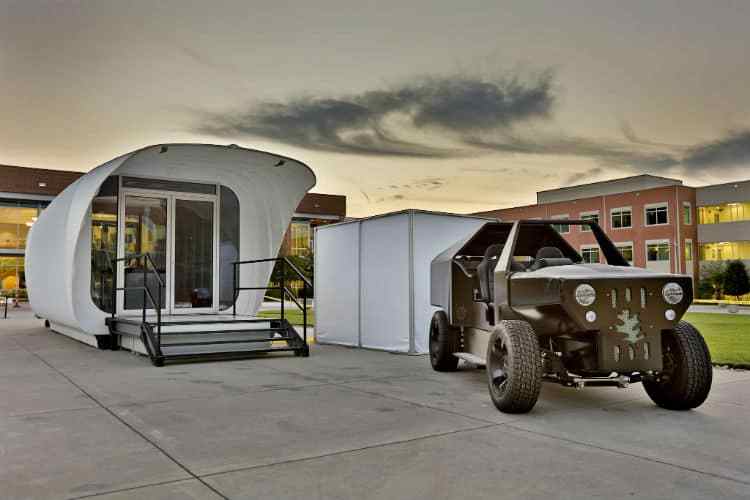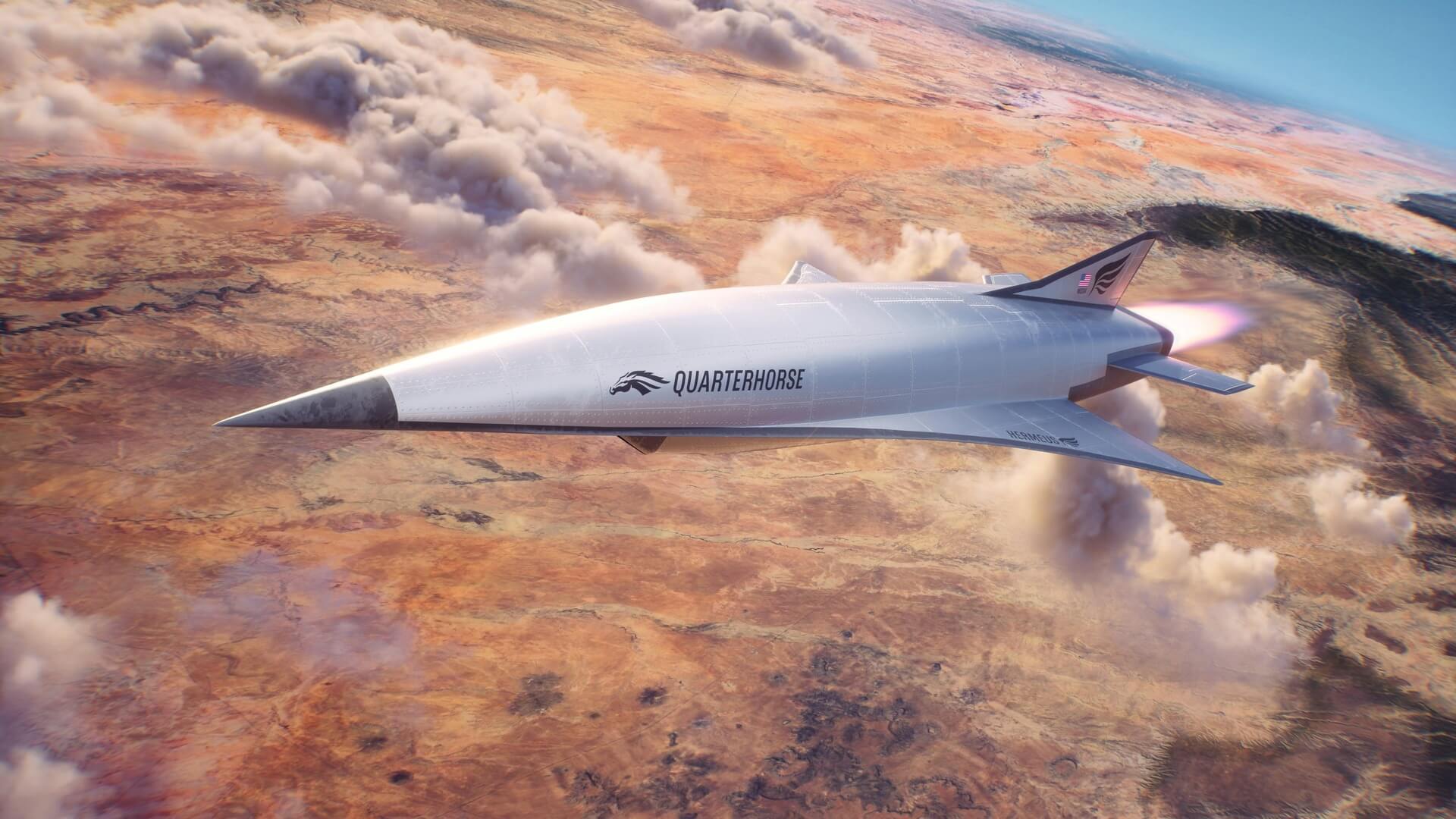
7 Types of Additive Manufacturing
January 25, 2020 - Emily Newton
Revolutionized is reader-supported. When you buy through links on our site, we may earn an affiliate commission. Learn more here.
VAT Photopolymerization | Powder Bed Fusion | Binder Jetting (3D Printing) | Material Jetting | Sheet Lamination | Material Extrusion | Directed Energy Deposition | Creativity
Whether you’re a hobbyist tinkerer or you build must-have products in a business setting, sometimes creating something amazing means learning about new tools. You might be familiar with some of these different additive manufacturing processes. Nonetheless, you might find something here that better suits one of your intended projects or opens up new opportunities altogether. Read on for a quick guide on the seven different types of additive manufacturing.
VAT Photopolymerization
Photopolymerization is probably one of the more visually interesting additive manufacturing methods.
VAT polymerization begins with a build platform being lowered into liquefied photopolymer resin. A powerful UV light, controlled by a computer, is applied where needed and cures the liquefied material into a solid shape. Your material choices include plastics, polymers and resins. From the outside, it might look like a 3D printed process, but instead of moving a print-head across a printing bed as it deposits melted plastic filament, you’ll see it taking shape within in a vat of liquid. Once the photopolymerization process is done, the unaffected liquid is drained away to be reused for other projects, and the finished product is left behind. It looks like something out of a science fiction movie, but it’s science fact, and you can use it to make all sorts of things.
Unlike several of the other processes, the VAT polymerization process itself doesn’t provide support for the object being created — additional support may be required. However, it does result in high accuracy and lends itself well to larger build areas. Plus, the final product usually features a pleasing finish without the need for post-processing.
Powder Bed Fusion
Powder bed fusion refers to several similar manufacturing methods that cover a variety of build materials. The process works by first applying a thin — less than .1 mm — layer of material onto a build platform. Using a laser, the powdered material is fused into place and shape. Electron beam melting is similar, but may use a vacuum. Direct metal laser sintering is the better choice for building with metals.
This is similar to a standard 3D printer, but instead of creating the design one layer at a time on the print bed, it’s fused 0.1mm at a time as new layers of powder are added to the print surface. The unique thing about this type of additive manufacturing is that you can use nearly any type of base material that can be powdered, from plastics and nylons to cobalt chrome, steel and titanium.
Because each cross-section of your intended product is fused individually, there is no inherent support structure, and the process is relatively slow. Powder bed fusion also uses somewhat more energy than other methods listed in this article. However, the process is relatively inexpensive and is a good choice for prototyping. The technology required also has a small footprint, meaning production of this kind doesn’t require a massive bespoke facility.
Binder Jetting (3D Printing)
3D printing, also called binder jetting, is taking the world by storm and for good reason. It’s increasingly cost-effective, and new technologies make it more versatile all the time.
During this process, your product takes shape as liquid bonding agents are applied alternatively with layers of powered plastics, ceramics and metals. The binders themselves may be organic or inorganic. It’s more similar to paper printing than it is to the 3D printing that you might be familiar with. The binders act like the ink you’d find in an inkjet printer, moving across the layers of powder that act as paper. Parts derived from metal or ceramic must be furnace-fired after the printing is complete.
Unlike a hobbyist’s 3D printer that uses heat to melt plastic filament, no heat is involved in binder jetting. You also don’t need a build plate or any additional support as you do with many other types of 3D printing, because the powder in the container provides support before being drained after the print is complete. An advantage of 3D printing is that it allows you to create full-color “prints” and parts. It also allows you to choose from a variety of materials and is a relatively high-turnover manufacturing method.
Material Jetting
Material jetting is similar to binder jetting. In this process, liquid material — including waxes, photopolymers and polymers — are dropped down onto a work surface. Of the manufacturing methods described in this piece, material jetting is most like the traditional inkjet printer you might have in your home office.
Ultraviolet light cures the finished object. In this, material jetting is something like a cross between binder jetting and VAT photopolymerization. The main difference between the two is that while there is no heat applied in binder jetting, in material jetting, the liquid resin is heated to between 30-60 degrees Celsius to help it reach printing viscosity. Choose this method if cost is of concern to you — little material goes to waste in material jetting. A downside is that while material jetting is highly accurate, it has limited material selection. This limited selection results in a product that might require additional materials for support. You are also able to create full-color and multicolor prints similar to binding jetting with this type of additive manufacturing.
Sheet Lamination
The term “sheet lamination” may refer to either ultrasonic additive manufacturing or laminated object manufacturing. Both processes are similar in that they involve ribbons, or sheets, of solid material. Ultrasonic welding fuses ribbons of metal in ultrasonic additive manufacturing, whereas laminated object manufacturing joins sheets of paper with adhesive. Either way, the product takes shape layer by layer. As each layer is placed, it’s cut into shape before the next one is attached, though these steps may be reversed with each layer already cut to shape before it’s attached to the one before it.
This process does result in some waste and requires additional computer numerical control machining to remove excess material not joined with the finished product. However, it is inexpensive and fast. The finish on your product may vary, depending on the material you choose, and you may have to invest in additional finishing or post-processing.
Material Extrusion
Material extrusion is a branch of 3D printing. You’ll find it employed by hobbyist printers turning out basic builds and components in home and perhaps office settings. It’s currently the most affordable type of additive manufacturing and is easily accessible for the average individual. You can get a basic 3D printer on sites like Amazon for a few hundred dollars or less.
In this manufacturing process, the material is drawn through a nozzle and deposited on a build surface layer by layer. If the image in your head resembles a baker applying frosting with a frosting gun, you aren’t far off. While your home 3D printer will likely only work with plastic and other materials that melt easily and cool quickly, material extrusion has been explored for use with other more difficult-to-manipulate mediums from molten glass and metal to concrete for quick home-building.
Unlike other forms of 3D printing, the material passing through the nozzle must be applied consistently and under uniform pressure. An accurate and visually pleasing result depends on it. The variables involved in material extrusion make it one of the fussier methods here. Plus, the physical limitations of the nozzle itself put an upper limit on the fit-and-finish of your final product. It’s also a somewhat slower process than some of the others seen so far.
Directed Energy Deposition
You’ll also hear directed energy deposition referred to as laser-engineered net shaping or 3D laser cladding, among other terms. It’s a different type of additive manufacturing — one that’s generally employed to add new material to an existing object.
That also makes it a more complex process than some of the others. The process itself resembles material extrusion, except the nozzle arm can move more freely and along four or five axes. The arm deposits melted material onto the work object, where it cools and solidifies. The base material may arrive spooled or powdered. It’s similar to powder bed fusion but instead of leaving the item buried in a bed of powder once it’s complete, DED uses a constant stream of powder that’s blown by a non-reactive gas (such as Argon) directly into the focal point of the system’s high-powered laser. There it melts, is shaped by the nozzle and arm, and cools in place.
You can’t use this method with ceramics or polymers — only cobalt-chromium and titanium. This method is also not currently considered a mainstream additive manufacturing method. In addition, note that while this process gives you superior control over the grain structure of your product. You might desire post-processing for final fit-and-finish.
Creativity Comes Next
By now, you should have a good foundational knowledge of the different types of additive manufacturing. From here, it’s a matter of consulting your imagination, coming up with a can’t-miss product and matching it with a suitable additive manufacturing technique. And as each of these processes gets refined even further by new technologies, your imagination will feel even more unfettered.
This article originally published on 10/17/2017 and was updated 1/25/2020 to included additional information.
Revolutionized is reader-supported. When you buy through links on our site, we may earn an affiliate commission. Learn more here.
Author
Emily Newton
Emily Newton is a technology and industrial journalist and the Editor in Chief of Revolutionized. She manages the sites publishing schedule, SEO optimization and content strategy. Emily enjoys writing and researching articles about how technology is changing every industry. When she isn't working, Emily enjoys playing video games or curling up with a good book.






